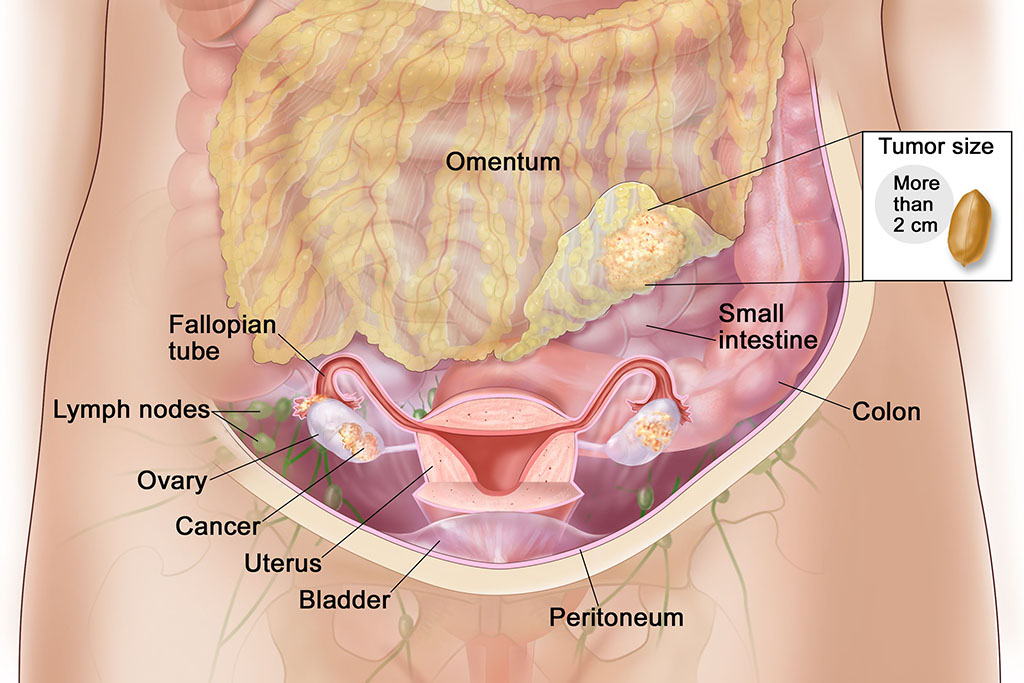Peritoneal Surface
Peritoneal surface malignancies comprises of tumors originating in the peritoneal lining of the abdomen (known as primary peritoneal cancers) as well as tumors that have spread from their primaty site of origin to the peritoneaum (peritoneal metastases).
What are Peritoneal surface malignancies?
Peritoneum is a thin membrane which forms the lining of the abdominal cavity as well as covers most of the intra-abdominal organs. It is composed of a layer of mesotheial cells supported by a thin layer of connective tissue. The mesothelial cells secrete fluid that helps lubricate the surfcaes of intarabdominal organs and thus facilitates their movement against each other. Peritoneum also plays an important role in transfer of fluids and solutes from the abdominal (peritoneal) cavity to the blood.
Symptoms of Peritoneal surface malignancies:
Whether primary involvement or metastastic spread, symptoms of patients with peritoneal malignancy are usually non-specific and include:
The peritoneum is more often involved by cancer cells that have spilled from tumors originating elsewhere for example from advanced ovarian cancer, colorectal cancer, appendiceal cancer, gastric cancer, pancreatic cancer, gall bladder cancer etc. Tumors originating in the peritoneum itself are rare and include malignant peritoneal mesothelioma, primary peritoneal serous carcinoma, Leiomyomatosis peritonealis disseminata, Desmoplastic small round cell tumor etc.
Types of Peritoneal surface malignancies
Tumors arising in the peritoneum (primary peritoneal cancer) are rare and include:
- Malignant peritoneal mesothelioma,
- Primary peritoneal serous carcinoma,
- Leiomyomatosis peritonealis disseminata,
- Desmoplastic small round cell tumor etc.
Tumors spreading to the peritoneum from other sites of origin are more common Cancers more commonly assosiated with peritoneal spread include
- Ovarian cancer
- Gastric cancer
- Colo-rectal cancer
- Appendiceal cancer
- Pancreatic and gall bladder cancer etc.
Causes of Peritoneal surface malignancies:
- Almost all cancers originatig in intra-abdominal organs can spread to the peritoneum in advanced stages. Peirtoneal spread or metastases is however, commonly seen in cases of advnaced ovarian cancer, colorectal cancer, gastric cancer and appendiceal cancer. So patients, with above mentioned cancers are at an increased risk of developing peritoneal spread, especilly when they had locally aggressive cancers at the time of their cancer diagnosis.
- It’s not known exactly what causes primary peritoneal cancers, though the process begins when a series of mutations in peritoneal cells results in out-of-control growth of abnormal peritoneal cells. The other risk factors that have been implicated to increase the risk of primary peritoneal cancers are as follows:
- Prolonged exposure to asbestos, has been shown to increase risk of getting pleural and peritoneal malignant mesothelioma.
- Women with germline mutaions in BRCA 1 and 2 genes are at increased risk of developing primary peritoneal serous carcinoma.
- Conditions producing high estrogen states have been proposed to increase the chances of developing diffuse peritoneal leiomyomatosis. These include, long term use of oral contraceptive pills, use of hormone replacement therapy, use of tamoxifen in breast cancer patients and estrogen producing ovarian tumors.
- Studies have shown young Caucasian boys to be at increased risk of getting peritoneal desmoplastic small round cell tumors.
When to see the Doctor?
The symptoms can appear in different forms as mentioned above and hence, if you are experiencing a combination of any of these symptoms, especially over longer periods, you should consult a doctor.

Prevention of Peritoneal surface malignancies
Testing for Peritoneal surface malignancies
Treatment of Peritoneal surface malignancies
A multidisciplinary team comprising of surgical oncologist, medical oncologist, radiologist, pathologist, psychologist, intensivist is of utmost imporatnce when deciding the appropriate treatment and the treatment sequence in patinets with peritoneal surfcae malignancies.
The treatment usually depends on the general condition of the patient, extent of disease, the histopathological type, prior treatments received, disese free interval etc.
Other than the systemic chemothaerpy or targeted therapy given by intravenous route, the special treatment for patients with peritoneal surface malignancy includes:

Cytoreductive surgery (CRS) and Hyperthermic intraperitoneal chemotherapy (HIPEC):
CRS and HIPEC is a novel form of treatment for diseases involving the peritoneum, which for decades were being treated with only palliative intent. After complete surgical removal of the peritoneal disease ie CRS, heated chemothaerpy is instilled in to the peritoneal cavity in the operating room itself ie HIPEC. This allows a much higher concentration of the drug to act on the residual peritoneal metastatic disease with minimal systemic side-effects. The hyperthermia in addition to its direct cytotoxic effect, also enahnces the intratumoral drug penetrance and in many instances helps overcome the drug resistance, which may have been developed due to the previously administerred intravenous chemotherapy.
Intraperitoneal (IP) port placement and IP chemothearpy:
Other than HIPEC, which delivers hyperthermic chemotherapy intra-operatively, IP port system can be placed for delivering normothermic chemotherapy with or without systemic chemotherapy (IP+/-IV). This new bidirectional treatment ensures that the peritoneal metastatic disease is being acted upon from both sides of peritoneum. This helps circumvent the fact that only a small amount of drug administered systemically reaches the peritoneum due to the blood peritoneal barrier.
This new treatment delivery system has been used successfully as neoadjuvant treatment also, especially in patients with peritoneally metastasised gastric cancer and in Pseudomyxoma peritonei (PMP) and has shown to increase the ability for complete CRS with consequent increase in survival, in this otherwise poor prognostic subgroup of patients.
Pressurised intraperitoneal aerosolised chemotherapy (PIPAC):
PIPAC is yet another novel intraperitoneal drug delivery system, wherein aerosolised chemotherapy is delivered under pressure, causing more uniform and homogenous drug distribution. PIPAC is used mainly in salvage situations eg intractable ascites, poor general condition patients etc. It is a day care procedure with prompt recovery. Apart from good symptom palliation, recent studies, have shown impressive response in some of the patients of advanced peritoneal disease, with few of them becoming amenable for secondary CRS and HIPEC.
Doctors

Dr. Aruna Prabhu

Dr. Deepti Mishra

Dr. Bhavesh Poladia


